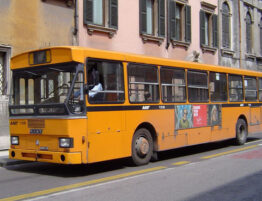
Following the by now well-known ruling of the Court of Justice (see our October 2014 Newsletter ), the minimum safety costs system, as laid down by Article 83bis paragraph 8, of Decree-Law 25 June 2008, n. 112, was expected to be further assessed by the Constitutional Court.
On 13 May 2015, the Constitutional Court filed Decision n. 80/2015 declaring the inadmissibility of the raised issues concerning constitutionality and ordering the return of the judicial files to the referring Courts of Lucca and Trento. What are the legal reasons behind this decision and, above all, what will the practical consequences for carriers and contractors be?
The decision issued by the Constitutional Court states that “with reference to the censures raised by both courts with concern to the determination of the price of the contract of carriage, it should be noted that, after the referring orders, the Court of Justice of the European Union, by means of judgment dated 4 September, 2014 (joined cases from C-184/13 to C-187/13, C-194/13, C-195/13 and C-208/13), stated that « Article 101 TFEU, read in conjunction with Article 4(3) TEU, must be interpreted as precluding national legislation, such as that at issue in the main proceedings, pursuant to which the price of haulage services for hire and reward may not be lower than minimum operating costs, which are fixed by a body composed mainly of representatives of the economic operators concerned»”. Consequently, the Constitutional Court considers that this ruling, together with the Stability Law, which has repealed minimum safety costs starting from 1 January 2015, could amount to a jus superveniens which could potentially affect the events submitted to the scrutiny of the Courts of Lucca and Trento. It was thus concluded that “it is up to the referring Courts to assess the impact of the decision taken by the Court of Justice and of the amendments to the law on the decision regarding the action brought before them and on the persistent importance of the issue of constitutionality”.
Having clarified the legal and logical reasoning made by the Court, nothing changes at this point from a practical point of view with respect to the scenarios which could be envisaged after the ruling of the Court of Justice. While referring to the detailed explanation provided in our October 2014 Newsletter , we believe that the two different possible conclusions that the Judges could reach at the end of the pending tariff disputes are:
- a) the one according to which the Court of Justice has concluded that only the minimum safety costs determined by the Observatory are not compatible with the Community Law;
- b) the one according to which, the incompatibility of the whole minimum safety costs system with the Community orientation may be inferred from the wording of the ruling of the Court of Justice, regardless of the body (be it Observatory or Ministry) that determined the minimum costs for the time period object of the dispute which will have to be decided upon.
Therefore, in substance, also after the decision of the Constitutional Court, the domestic Courts -who have to decide over proceedings pending for the acknowledgment of the minimum safety costs fixed by the Ministry- may decide whether or not to apply the norm on a case-by-case basis.
(Bologna Office – Massimo Campailla – 0039(0)512750020)









